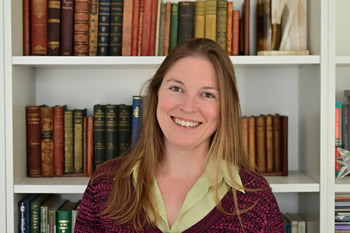Dr. Julia KenyonBy Dr. Luca Gebert  Dr. Julia Kenyon is a College Senior Lecturer in Biomedical Science and an Associate Principal Investigator at the University of Cambridge since 2015. She obtained her Master's degree in Biochemistry from Oxford University and her Ph.D. from Imperial College. Currently, Dr. Kenyon investigates RNA-protein complexes involved in HIV genome packaging using the in-gel SHAPE technique. Recently, for obvious reasons, she also became interested in understanding SARS-CoV-2 packaging. Dr. Kenyon said she "was drawn to the study of RNA by working as a research assistant with the late Prof. Kiyoshi Nagai. I worked there immediately following my undergraduate degree. It taught me as much in six months as I'd learned in a four-year degree." Later on, during her Ph.D. in virology in the group of Prof. Geoffrey Smith at Imperial College, Dr. Kenyon realized that "most research on viruses had been pursued from the protein perspective." Throughout her work, Dr. Kenyon was fascinated by how fundamental the RNA structure of viruses was to their lifecycle. She said, "Working with viruses convinced me that RNA with its structural flexibility and versatility in its functions was, in fact, much more interesting than proteins!" Dr. Kenyon's advice to current trainees is to balance between the time used to plan an experiment and the time it takes to perform it: "With too little planning you might miss something obvious… on the other hand, with too little experimentation you might miss the chance to discover something unexpected." In addition, thinking about her mentors, Dr. Kenyon said that the most important advice she received was to "take the time to work out what she was most interested in, and then to become as highly qualified in that field as possible. If you do this, you would be much more likely to have a successful career and a job that you love."
Dr. Kenyon overcomes challenges by actively tackling them: she used to find interactions with interview panels, viva committees, or even audiences asking questions quite daunting, and as a result, felt she might not always have given the best answer. She acknowledged, "My solution was to face these fears head-on through teaching undergraduates in Cambridge." Rather than just being the time taken away from research, Dr. Kenyon thinks that “teaching has tremendously improved her skills in communicating research.” She realized that she very much enjoys having discussions about molecular biology with her students. Teaching also increased her confidence, and questions are now less daunting, as she sees them "as starting points for valuable and interesting discussions." Dr. Kenyon's most memorable RNA Society Meeting was the meeting in Berlin in 2008. It was her first RNA Society meeting, and she had never before been to a conference with so many interesting talks, so she wanted to attend all of the parallel sessions. It was also relatively warm, with temperatures around 40°C, which she (hailing from the harsh British climate) perceived as quite non-European. The heat kept the conference beer garden buzzing late into the evening. On the train back to the hotel, one of Dr. Kenyon's colleagues, whom she described as somewhat reserved, broke into a spontaneous operatic song at an operatic volume! The confused and amused expressions of Berliners on board, as well as her other colleagues, were particularly memorable. Dr. Kenyon's favorite RNA is the Feline Immunodeficiency Virus (FIV) genome: "There are so many species-specific strains of FIV, and there's so much to learn about the RNA structures within the genome and why they're important to the biology of each of those strains." |
